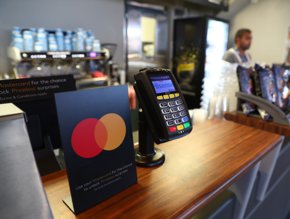Key Marketing Trends for 2012: Part Two

Written by Robert Passikoff
Last month, in our July issue, we brought you the first six of Robert Passikoff’s 12 key marketing trends for 2012. Now, we present you with the final six. These trends will have direct consequences to the success or failure of your branding, engagement and marketing efforts this year.
7. Mobilized Money
Handheld technology and smarter-and-smarter smartphones will increase opportunity for more mobile monetary transactions. Brands that do not facilitate small screen transactions will find consumers hanging up on them. Watch for increased credit card and promotional outreach, especially if the brand can customize the small screen experience.
8. Real-Time Branding
As brands like Amazon and Zappos taught, and consumers learned—fragmented lifestyles and increased expectations could be better serviced by the near-instantaneous availability of products (and their return). Consumers will expect brands to respond with the click of a “Send” key, no matter in which category they compete.
9. Innovation is Sincerest Flattery
Given increased consumer expectations and decreased brand differentiation, brands will need to understand what really drives their categories and where to innovate against consumer pain points. Zappos sells shoes—but their brand equity lies primarily in the emotional driver of “service” and how they quickly they process both delivery and returns. Consumer irritation is erased by innovative, painless, free delivery.
10. Coolsumption
Creative response to consumer expectation will become de rigueur for brand leaders. But the brand party many of us attended before the economy called the police has left a hangover that is not going away any time soon. Sure, Apple sells phones and mp3 players, but they leverage engagement and loyalty—not by delivering “communication” or “entertainment,” but by delivering products that are beautifully, creatively and organically designed. Look for a desire for the coolness of beauty—whether a graceful delivery system or a gorgeous product—to escalate.
11. Simplexity
Increased consumer desire for simplicity is a strong trend as complexity pushes on people. Look for smaller, higher-quality products and ease-of-service delivery methods. This will result in the convergence of complex services and products into simple, expectation-exceeding solutions, but only if brands know where to look in their own categories for the "wow" button to press.
12. You Need to Be Aware That Engagement is Not a Fad
Engagement is the way empowered consumers do business today, period. Marketers can and should plan with engagement methods like the right platform, program, message or experience, but out-dated awareness models will continue to be ineffective and there should be only one objective for these engagement methods: Brand Engagement.
Accommodating these trends will require a change in the ways companies measure, manage and market their brands. And, yes—change is often a scary proposition, but the key is focused changes, which are always easier to make when you have the consumer telling you exactly where to focus.
- Why Ceridian has boldly rebranded to DayforceHuman Capital
- The best and worst technology company rebrands in historyLeadership & Strategy
- Three email marketing tactics to boost deliverabilityLeadership & Strategy
- Why organisations are rebranding in a new era of businessLeadership & Strategy






